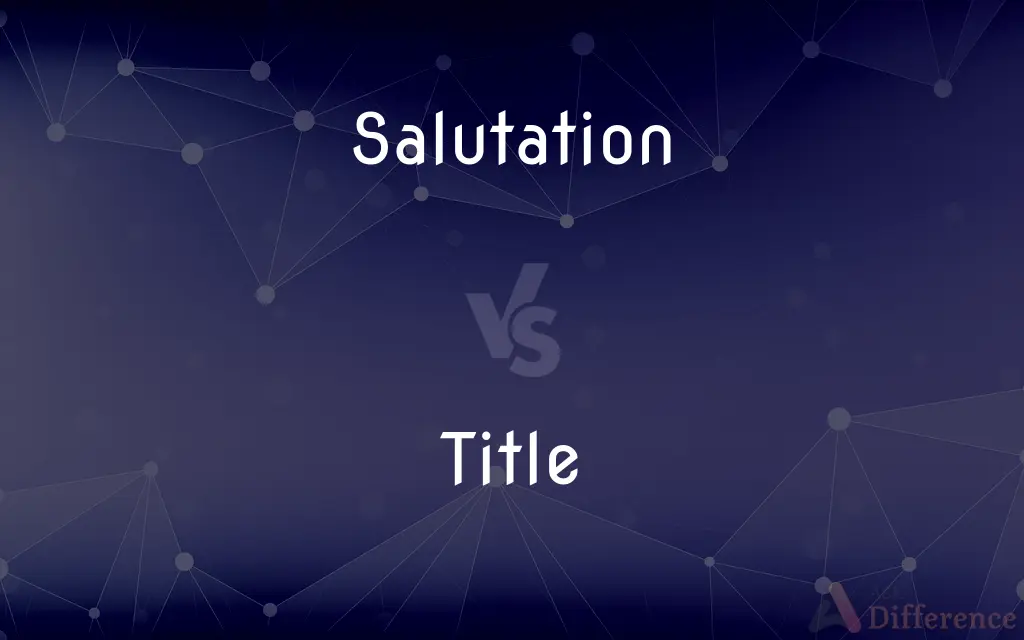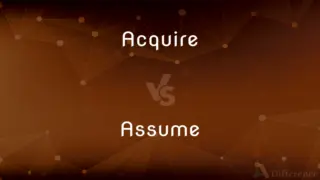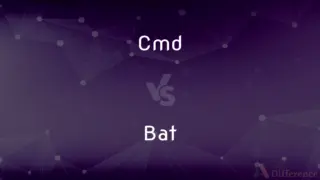Salutation vs. Title — What's the Difference?
By Maham Liaqat & Fiza Rafique — Updated on February 27, 2024
A salutation is a greeting used in communication, often at the beginning of a letter or email, while a title is a term indicating rank, position, academic achievement, or honorific status before a person's name.

Difference Between Salutation and Title
Table of Contents
ADVERTISEMENT
Key Differences
Salutations and titles are both important elements in formal communication, but they serve different purposes. Salutations, such as "Dear," "Hello," or "Greetings," initiate communication by addressing the recipient with a polite or respectful tone. They are typically followed by the recipient's name or title and set the tone for the correspondence that follows. Titles, on the other hand, are used before a person's name to denote their professional position, social rank, or academic achievement. Examples include "Dr.," "Mr.," "Professor," or "Ms."
The choice of salutation can depend on the relationship with the recipient, the level of formality of the communication, and cultural norms. In contrast, the use of titles is determined by the individual's qualifications, positions, or honors. Titles are a way to acknowledge and respect a person's achievements or status.
Salutations are flexible and can vary based on the sender's discretion and the nature of the message, titles are more rigid, directly linked to societal, professional, or educational standards. Misusing a title can be seen as disrespectful or indicative of a lack of awareness, whereas inappropriate salutations might simply come off as overly casual or overly formal, depending on the context.
Salutations and titles are used together in formal communications. For example, a letter might begin with a salutation like "Dear," followed by a title and the recipient's last name, such as "Dr. Smith," combining both elements to address the recipient properly and respectfully.
Comparison Chart
Purpose
To greet and initiate communication.
To denote rank, position, or achievement.
ADVERTISEMENT
Usage
At the beginning of letters or emails.
Before a person's name.
Variability
Flexible, based on sender's discretion.
Fixed, based on societal standards.
Dependency
Depends on the level of formality.
Depends on individual's qualifications.
Examples
"Dear," "Hello," "Greetings."
"Dr.," "Mr.," "Ms.," "Professor."
Compare with Definitions
Salutation
Varies with context.
The casual salutation Hi was used for the internal memo.
Title
Reflects academic achievement.
John Doe, PhD, was recognized for his research.
Salutation
Reflects sender's intention.
The salutation To Whom It May Concern was used for the formal inquiry.
Title
Indicates professional or social rank.
Dr. Rivera was invited as the keynote speaker.
Salutation
Initiates correspondence.
His letter used the formal salutation Dear Mr. Johnson.
Title
Signifies honorific status.
Sir Elton John was awarded the medal.
Salutation
Sets tone of the message.
The salutation Greetings gave the email a friendly tone.
Title
Denotes position or job.
CEO Jane Doe announced the new initiative.
Salutation
A greeting in communication.
She started the email with the salutation Dear Team.
Title
Used before names.
Professor Smith will be attending the conference.
Salutation
A salutation is a greeting used in a letter or other written or non-written communication. Salutations can be formal or informal.
Title
A title is one or more words used before or after a person's name, in certain contexts. It may signify either generation, an official position, or a professional or academic qualification.
Salutation
A polite expression of greeting or goodwill.
Title
The name of a book, composition, or other artistic work
The author and title of the book
Salutation
Salutations Greetings indicating respect and affection; regards.
Title
A name that describes someone's position or job
Leese assumed the title of director general
Salutation
A gesture of greeting, such as a bow or kiss.
Title
An identifying name given to a book, play, film, musical composition, or other work.
Salutation
A word or phrase of greeting used to begin a letter or message.
Title
A general or descriptive heading, as of a book chapter.
Salutation
The act of greeting.
Title
A written work that is published or about to be published
The titles in the publisher's fall catalog.
Salutation
An act of honor or courteous recognition;
A musical salute to the composer on his birthday
Title
The name of a book, film, musical piece, painting, or other work of art.
I know the singer's name, but not the title of the song.
Salutation
Word of greeting used to begin a letter
Common Curiosities
Can salutations and titles be used together?
Yes, they are often used together in formal communication to address someone respectfully.
How do I choose the right salutation?
The right salutation depends on your relationship with the recipient, the communication's formality, and cultural norms.
Why are titles important?
Titles are important for acknowledging and showing respect for a person's achievements, status, or position.
Is it okay to use a casual salutation in a formal email?
Generally, it's best to use a formal salutation in a formal email to maintain professionalism.
Can the misuse of a title be offensive?
Yes, using the wrong title or misrepresenting someone's title can be seen as disrespectful.
What title should I use for someone with multiple degrees?
Generally, use the most relevant or highest-ranking title for the context of your communication.
What is a salutation?
A salutation is a greeting used to initiate communication, often at the start of a letter or email.
What does a title signify?
A title signifies a person's rank, position, academic achievement, or honorific status.
How do I address someone if I don't know their preferred title?
If you're unsure of someone's preferred title, using their full name without a title or a general salutation like "Dear" is a respectful approach.
Is it necessary to use a title with every salutation?
While not always necessary, combining a title with a salutation is common in formal settings to show respect.
What if I don't know the recipient's title?
If you're unsure of the recipient's title, using a general salutation like "Dear Sir/Madam" is a safe approach.
Are there cultural differences in using salutations and titles?
Yes, cultural norms significantly influence the appropriate use of salutations and titles in communication.
Can I omit a salutation in an email?
Omitting a salutation in an email can be seen as too casual or impersonal in formal communications.
Do salutations vary in different languages?
Yes, salutations vary significantly across languages and cultures, reflecting different levels of formality and respect.
How has the use of salutations and titles evolved?
The use of salutations and titles has evolved to include more gender-neutral options and to adapt to changing societal norms.
Share Your Discovery

Previous Comparison
Acquire vs. Assume
Next Comparison
CMD vs. BATAuthor Spotlight
Written by
Maham LiaqatCo-written by
Fiza RafiqueFiza Rafique is a skilled content writer at AskDifference.com, where she meticulously refines and enhances written pieces. Drawing from her vast editorial expertise, Fiza ensures clarity, accuracy, and precision in every article. Passionate about language, she continually seeks to elevate the quality of content for readers worldwide.














































